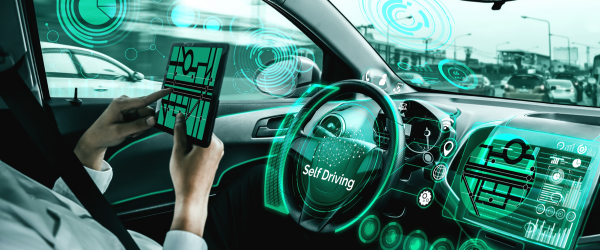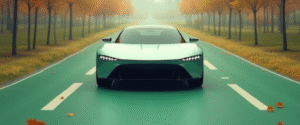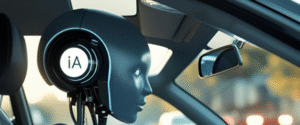Self Driving Cars: Are They Safe?

Self-driving cars were once a futuristic dream, but today, they are becoming a reality. Major tech companies and car manufacturers are investing in autonomous vehicle technology, promising safer roads and fewer accidents. But the big question remains—are self-driving cars really safe?
Let’s explore how self-driving cars work, their safety advantages, potential risks, and what the future holds for autonomous transportation.
1. What Are Self-Driving Cars?
Self-driving cars, also known as autonomous vehicles (AVs), use AI, sensors, cameras, and radar to navigate roads without human intervention.
Levels of Autonomy (SAE Classification):
🚗 Level 0: No automation (fully manual).
🚗 Level 1: Driver assistance (cruise control, lane keeping).
🚗 Level 2: Partial automation (self-steering & braking, but human must supervise).
🚗 Level 3: Conditional automation (car can drive itself, but human intervention is needed in emergencies).
🚗 Level 4: High automation (car can drive itself in most conditions).
🚗 Level 5: Full automation (no human needed at all).
Example: Tesla’s Autopilot is a Level 2 self-driving system, requiring driver supervision.
2. How Do Self-Driving Cars Work?
Self-driving cars rely on advanced technology and AI to detect surroundings and make real-time driving decisions.
Key Components:
✔ LiDAR (Light Detection and Ranging): Creates a 3D map of surroundings.
✔ Radar & Cameras: Detect vehicles, pedestrians, and road signs.
✔ AI Algorithms: Process data to predict traffic patterns.
✔ GPS & HD Maps: Help with navigation and route planning.
Example: Waymo, Google’s self-driving project, uses LiDAR and AI-powered decision-making to navigate city streets.
3. Are Self-Driving Cars Safer Than Human Drivers?
One of the biggest arguments for self-driving cars is that they could reduce human-caused accidents.
How Autonomous Cars Improve Safety:
✔ No Drunk Driving: AI doesn’t get intoxicated.
✔ No Distracted Driving: No texting, fatigue, or reckless driving.
✔ Faster Reaction Times: AI can analyze traffic data instantly and react quicker than humans.
✔ Accident Prevention: Advanced sensors detect dangers earlier.
📌 Fact: 94% of car accidents are caused by human error (NHTSA). Autonomous cars could save thousands of lives annually.
Example: Tesla’s Full Self-Driving (FSD) mode has been shown to react faster than human drivers in some situations.
4. The Risks & Challenges of Self-Driving Cars
Despite the potential benefits, self-driving cars are not perfect. There are still challenges and risks that need to be addressed.
Biggest Risks of Autonomous Vehicles:
🚨 Technical Failures: Sensors and AI can malfunction, causing miscalculations.
🚨 Hacking Risks: Cybercriminals could take control of autonomous cars.
🚨 Ethical Dilemmas: How should AI decide in life-or-death situations?
🚨 Legal & Insurance Issues: Who is responsible for accidents involving AVs?
🚨 Weather & Road Conditions: Heavy rain, snow, and fog can interfere with sensors.
📌 Example: In 2018, an Uber self-driving car struck and killed a pedestrian because its AI failed to identify the person in time.
5. Are Self-Driving Cars Legal?
Governments worldwide are slowly legalizing autonomous vehicles, but strict regulations exist.
Where Are Self-Driving Cars Allowed?
✔ USA: Certain states allow testing (California, Arizona, Texas).
✔ Europe: The UK, Germany, and Sweden permit Level 3 automation.
✔ China: Leading in self-driving taxis (Baidu & AutoX).
📌 Fact: In 2021, Germany became the first country to legalize Level 4 self-driving cars for public roads.
Example: Waymo (Google’s AV project) operates fully autonomous taxis in Arizona with no human driver.
6. When Will Fully Autonomous Cars Be Available?
Experts predict Level 5 fully self-driving cars could become mainstream by 2035-2040.
What Needs to Happen First?
- Better AI Algorithms: To handle unexpected road situations.
- Stronger Regulations: Governments must create new traffic laws.
- Improved Infrastructure: Smart roads, traffic lights, and better GPS.
- Public Acceptance: People must trust AI-driven transportation.
📌 Fact: Tesla, Waymo, and GM’s Cruise are aiming for fully autonomous taxis by 2030.
Example: Dubai aims to make 25% of all transportation self-driving by 2030.
7. Will Self-Driving Cars Replace Human Drivers?
While automation is increasing, human drivers will still be needed for years to come.
What Jobs Could Be Affected?
🚛 Truck Drivers: Companies are testing self-driving freight trucks.
🚕 Taxi & Uber Drivers: Autonomous taxis may replace ride-sharing services.
🚌 Bus Drivers: AI-driven public transport may reduce the need for drivers.
📌 Fact: The trucking industry could lose over 3 million jobs due to self-driving technology.
Example: Companies like Tesla and Waymo are already testing self-driving delivery trucks.
8. The Future of Self-Driving Cars
Self-driving cars are expected to revolutionize transportation, making roads safer and more efficient.
Future Innovations:
✔ AI-powered Traffic Systems – Smart roads and intersections.
✔ Self-Driving Delivery Services – Autonomous drones and trucks.
✔ Zero-Accident Vision – AI aims to eliminate car crashes completely.
✔ Car-as-a-Service (CaaS) – Personal car ownership may decline, and people will subscribe to autonomous car services instead.
📌 Example: Elon Musk predicts that self-driving taxis will be cheaper than owning a car.
Conclusion
Self-driving cars are one of the most exciting advancements in technology. They promise safer roads, fewer accidents, and a future where transportation is fully automated.
However, challenges like AI errors, cybersecurity risks, and legal uncertainties still need to be addressed before fully autonomous cars become mainstream.
So, are self-driving cars safe? The technology is improving every year, and while it’s not perfect yet, the future of AI-powered transportation is just around the corner! 🚗💨










